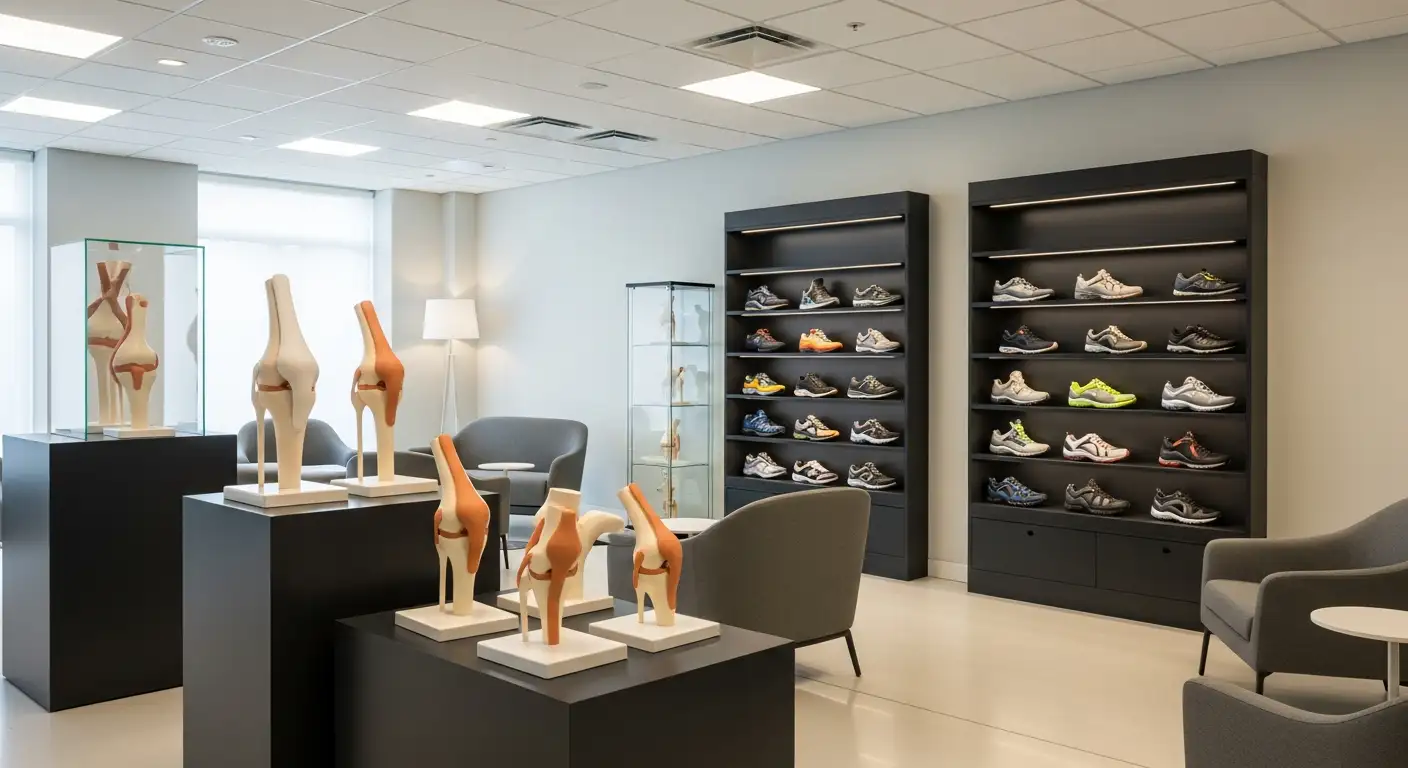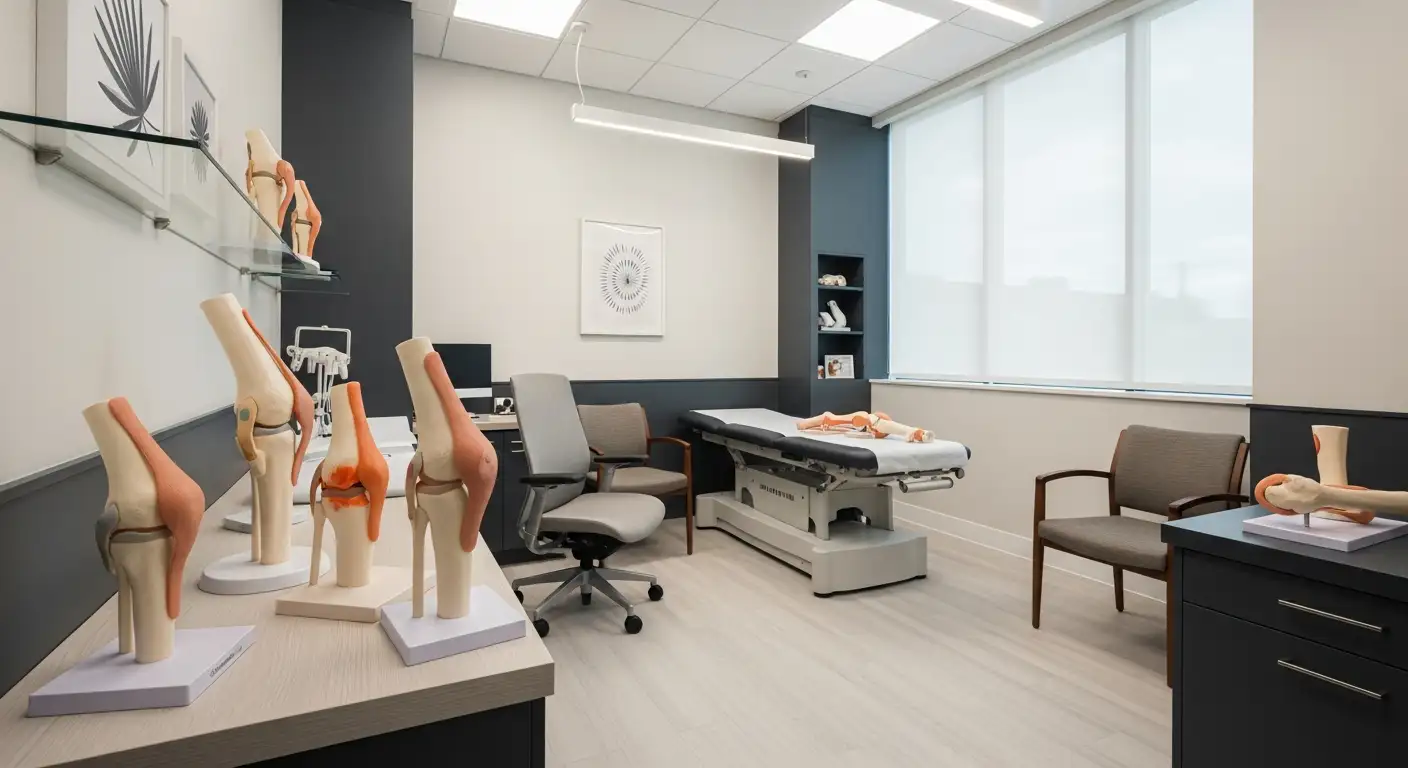Understanding Lateral Release Knee Surgery: A Comprehensive Overview
Lateral release knee surgery is a minimally invasive procedure designed to alleviate knee pain caused by patellar maltracking or instability. This keyhole intervention targets tight tissues on the outer side of the kneecap (patella), facilitating proper alignment and reducing undue stress on the joint. While generally safe and effective, the success of the surgery relies heavily on meticulous patient selection, precise surgical technique, and comprehensive postoperative care. This article explores the nuances of lateral release surgery—from indications and techniques to risks and recovery pathways—providing an in-depth understanding for patients and clinicians alike.
What Does Lateral Release Knee Surgery Involve?
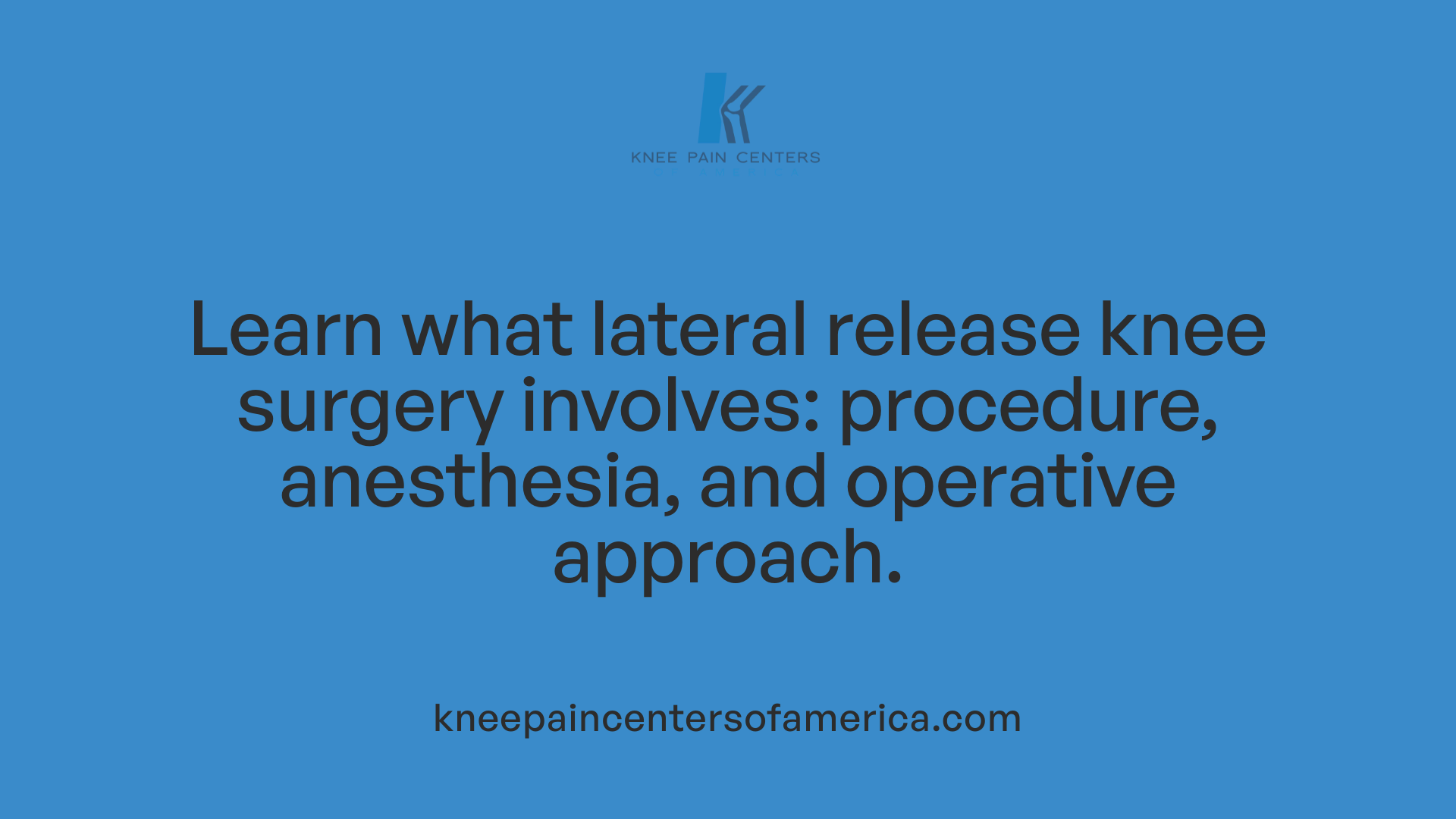
Procedure description
Lateral release knee surgery is a minimally invasive operation designed to improve kneecap (patella) alignment by releasing tight tissues on the outer side of the knee. The purpose of the procedure is to relieve pressure and correct maltracking, which can cause pain and instability. The surgeon accesses the knee through small incisions and cuts through specific ligaments or retinacular tissues that pull the patella laterally.
Type of anesthesia used
The surgery is typically performed under general anesthesia, ensuring the patient is completely unconscious and pain-free during the procedure. This approach allows the surgeon to work efficiently with minimal discomfort.
Surgical techniques employed
The primary technique used is arthroscopic surgery, involving the insertion of a tiny camera and instruments through small incisions. The surgeon guides the instruments to carefully cut the tight lateral retinaculum, which helps release lateral tension. Sometimes, additional procedures may be performed concurrently to stabilize the patella or address cartilage damage.
Extent of the incision and operative approach
The operation involves making three small incisions, each about a few millimeters long. These keyhole incisions provide access to the lateral retinaculum without large cuts, reducing recovery time and scarring. The minimally invasive nature of arthroscopy allows for precise modifications and a quicker return to daily activities.
Intraoperative assessment and testing
During the procedure, the surgeon tests the kneecap's movement and alignment after releasing the lateral retinaculum. They observe the patella's tracking within its groove, making adjustments if necessary to ensure proper positioning. This intraoperative testing helps prevent complications like medial instability or insufficient release.
Most patients experience symptom relief within three months, with full recovery potentially taking up to a year. Postoperative physical therapy, braces, and gradual activity resumption are crucial components of successful outcomes. Proper surgical technique and selection of suitable candidates are vital to minimize risks and enhance the effectiveness of the lateral release.
Candidates and Indications for the Procedure

Who are suitable candidates for lateral release knee surgery?
Suitable candidates for lateral release knee surgery are individuals experiencing pain and patellar maltracking caused by tight tissues on the outer side of the kneecap, known as the lateral retinaculum. These patients typically present with anterior knee pain linked to lateral patellar compression syndrome, especially when conservative treatments like physical therapy and stretching have failed.
To qualify for surgery, patients often show evidence of excessive lateral patellar tilt, generally greater than 12°, and limited lateral mobility of the kneecap, with a glide of two quadrants or less. This indicates a tight retinaculum pulling the patella outward and causing pain or instability.
Patients with recurrent patellar dislocation or significant malalignment might also be considered, often with additional procedures such as medial patellofemoral ligament (MPFL) reconstruction. It’s important that the procedure is part of a comprehensive assessment, including patellar tracking and stability, to ensure the best outcomes.
Overall, proper patient selection—based on a thorough clinical assessment and imaging—is essential. This helps avoid unnecessary surgery and enhances the chances of symptom relief and improved patellar stability.
Surgical Techniques and Approaches
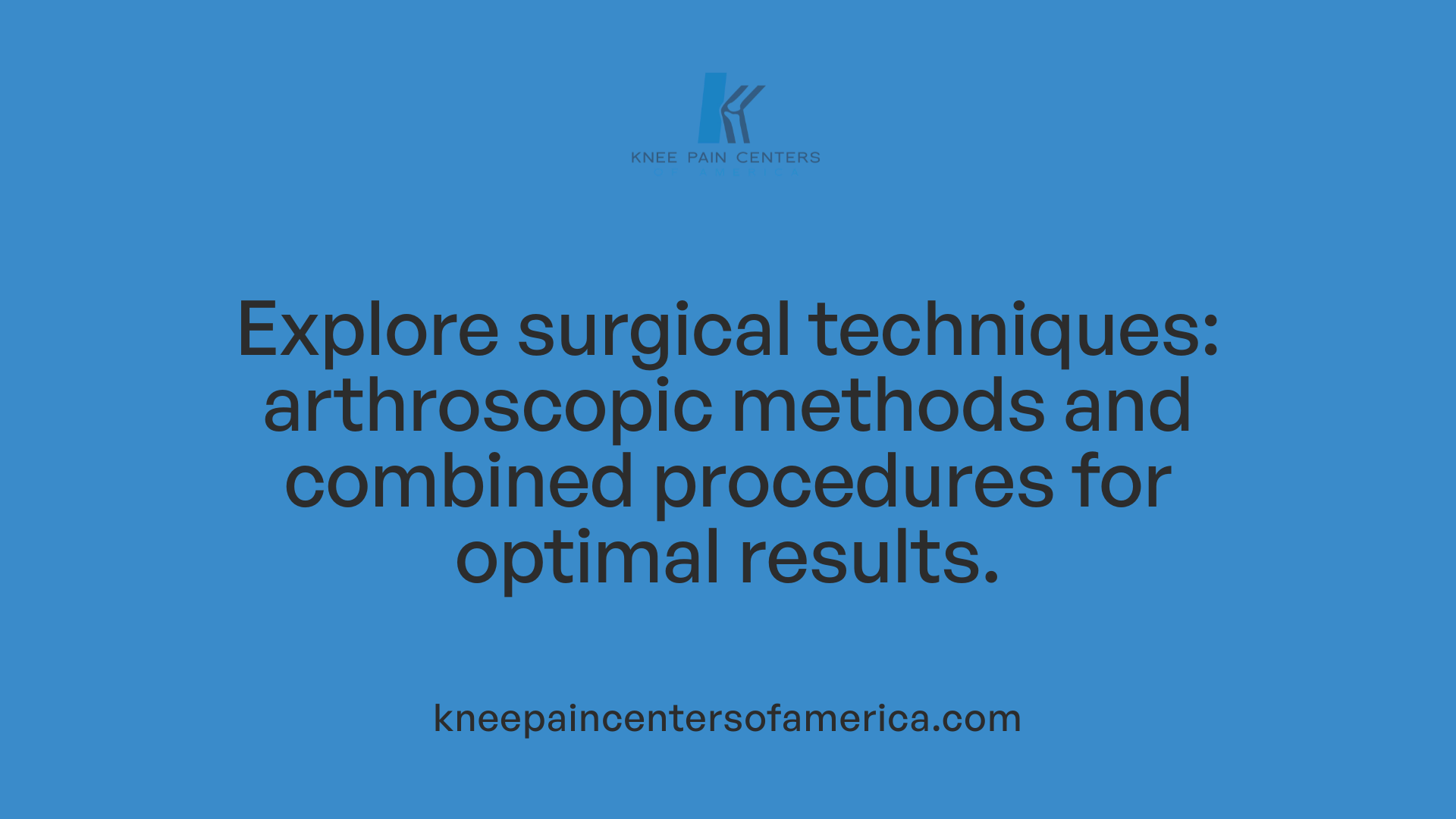
What surgical techniques and approaches are used in lateral release?
Lateral release surgery is usually performed using minimally invasive methods, primarily through arthroscopy, which involves small incisions around the knee.
In some cases, an open surgical approach might be necessary, involving a slightly larger incision to access the retinaculum directly. Both methods aim to carefully cut the tight tissues on the outer side of the kneecap to help the patella move properly.
Step-by-step surgical process
During the procedure, the surgeon makes three small incisions to insert an arthroscope and surgical tools. The first step involves visualizing the lateral retinaculum and surrounding structures. The surgeon then carefully incises this tissue to release tightness.
Specifically, for knee arthroscopy, a precise outside-in lateral retinaculum release technique is often used, which involves three progressive steps from the midpatella to the base of the patella. This method helps preserve important blood vessels, such as the superior lateral genicular artery.
After releasing the tissue, the surgeon tests the movement of the kneecap to ensure it's properly aligned. Additional procedures like medial reefing or tibial tubercle transfer may be performed if necessary to improve stability.
Finally, the incisions are closed, and the knee is prepared for postoperative care.
Preservation of blood vessels and nerves
A critical aspect of the surgical technique is maintaining intact blood supply and nerve function. The outside-in approach and careful dissection help avoid damaging major arteries and nerves, which could lead to complications like bleeding or tissue death.
Additional procedures combined with lateral release
Often, lateral release is combined with other interventions for better outcomes.
| Additional Procedures | Purpose | Benefits |
|---|---|---|
| Medial reefing | Tightening medial tissues to stabilize the kneecap | Improves stability and patellar tracking |
| Tibial tubercle transfer | Repositioning the attachment point of the kneecap | Corrects malalignment and reduces pain |
| Chondral repair | Fixing cartilage damage | Prevents further joint deterioration |
These combined techniques aim to enhance the success rate and prevent post-surgical instability.
Post-surgical techniques to prevent instability
Postoperative strategies focus on restoring proper function and preventing future instability. Patients are usually fitted with a knee brace locked at 30 degrees of flexion initially, to support the joint.
Physical therapy is essential, encouraging exercises like straight leg raises and ankle pumps early on. Progressive weightbearing with crutches helps reduce stress on the healing tissues.
Activities are gradually reintroduced, with most patients returning to light work within a week and sports in about four weeks. Regular follow-ups ensure the knee maintains stability, and any signs of instability or misalignment are addressed promptly.
In summary, lateral release surgery combines precise surgical techniques with careful attention to vascular and nerve preservation, often in conjunction with other procedures, to optimize patellar alignment and reduce the risk of postoperative complications.
Risks, Complications, and Their Prevention
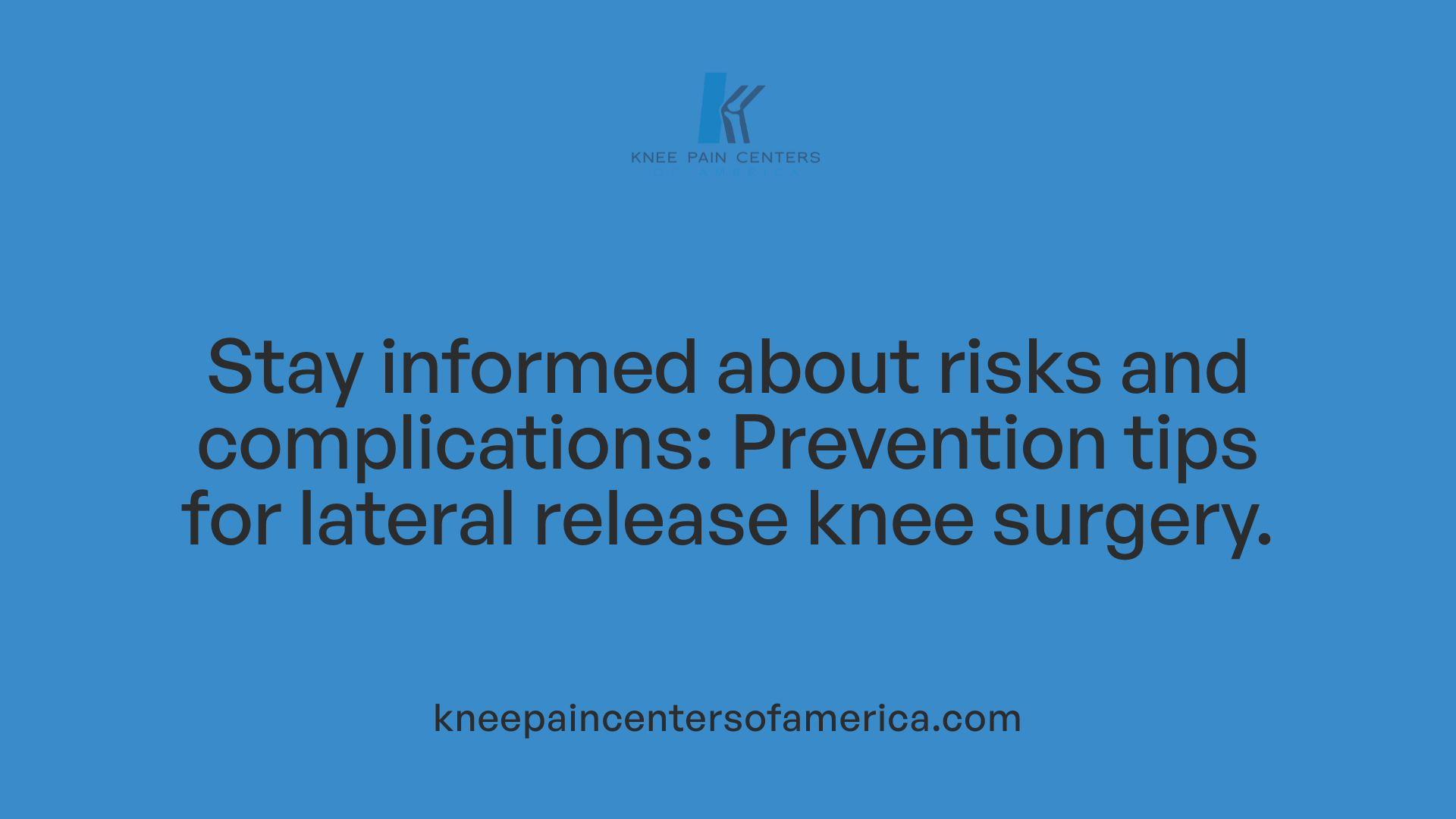
What are the risks and potential complications associated with lateral release surgery?
Lateral release surgery, while generally safe and minimally invasive, does carry certain risks. In the short term, one common complication is hemarthrosis, which is bleeding within the knee joint. This may cause pain, swelling, and may require medical intervention such as aspiration or drainage.
In the long run, inadequate release of tight tissues can lead to persistent symptoms, while over-release can weaken the quadriceps muscle group. Excessive release risks destabilizing the kneecap and causing medial patellar instability or subluxation, potentially leading to further instability or recurrent dislocation.
Patients may also experience skin burns from cautery tools used during surgery, or ongoing pain if healing is not optimal. Despite careful planning, the surgery might not fully relieve symptoms if the patient was not correctly diagnosed or deemed an appropriate candidate.
What about technical errors during surgery?
Errors during the procedure, such as excessive release of the lateral retinaculum, can cause weakening of the supportive tissues and result in medial instability. Conversely, insufficient release may leave the patient with continued lateral tightness and pain.
Failure to properly cauterize bleeding vessels can increase the risk of hematoma formation. Additionally, inadvertent burns from cautery may damage surrounding tissues.
How does patient selection and diagnosis accuracy influence outcomes?
Selecting suitable candidates is critical for success. Patients with additional issues like patellofemoral arthritis, hypermobility, or undue ligament laxity may not benefit fully from a lateral release alone.
Proper diagnosis involves assessing patellar tracking, joint stability, and cartilage health. Failure to identify these factors can lead to unsuccessful treatment and persistent symptoms.
Strategies to minimize risks?
Surgeons can minimize these risks by meticulous surgical planning, choosing the appropriate extent of tissue release, and using arthroscopic techniques for precision. Ensuring proper patient selection based on thorough clinical and imaging assessments is vital.
Before surgery, it’s essential to manage patient expectations and optimize their medical condition, including cessation of blood-thinning medications where appropriate. Postoperative care involving physical therapy, blood clot prevention measures, and monitoring for early signs of complications help ensure safety.
Is there a potential for instability or medial subluxation?
Yes. Over-release of the lateral retinaculum can lead to medial patellar instability or subluxation. This complication occurs when the structures that keep the kneecap centered become too loose.
In some cases, this instability may necessitate further procedures, such as medial stabilization, to restore proper patellar tracking. Careful, balanced release and thorough intraoperative testing for correct alignment are essential to prevent this issue.
Recovery, Rehabilitation, and Post-Operative Care
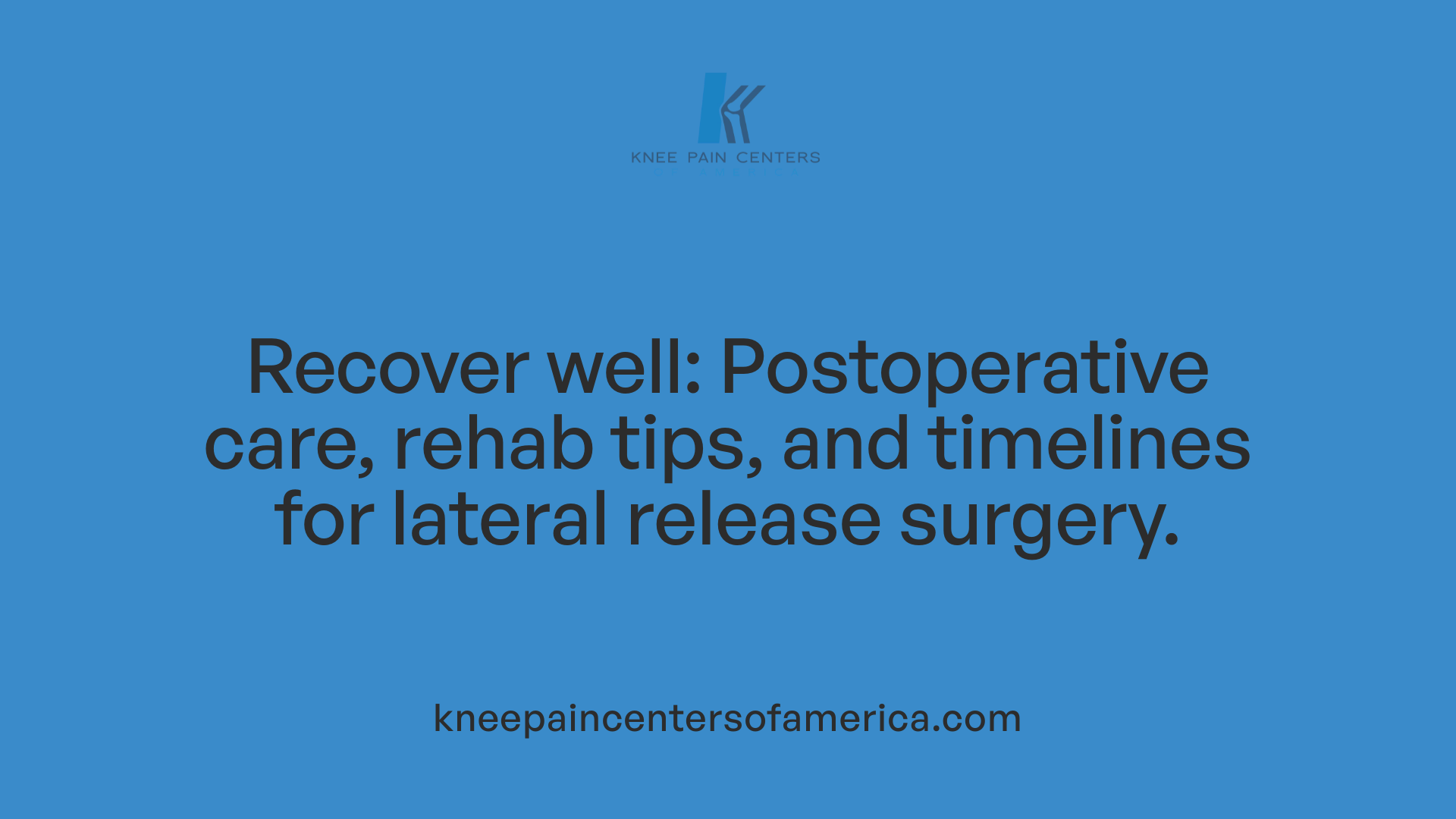
What is the recovery and rehabilitation process after lateral release surgery?
After lateral release surgery, patients typically experience some pain and swelling which are managed with rest, ice packs, elevation of the leg, and prescribed medications such as pain relievers. It is common to need crutches for the first few days to reduce weight bearing on the operated knee.
Immediately following the procedure, patients are encouraged to perform gentle range of motion exercises. These exercises focus on restoring the full extension and flexion of the knee and are usually started early to prevent stiffness. Incision care involves keeping the small surgical wounds clean and monitoring for signs of infection, such as increased redness or discharge.
Physical therapy is an essential component for a successful recovery. The therapy program systematically progresses from initial range of motion exercises to strengthening and flexibility exercises for the thigh muscles, especially the quadriceps. Improving gait, regaining knee stability, and preventing stiffness are primary goals during this phase.
The timeline for resuming activities varies among individuals. Most patients can return to light activities and work within about three days to a week, depending on the nature of their job. Full recovery, including the ability to return to sports or heavy physical activity, may take up to a year. The pace of progress depends heavily on consistent participation in physical therapy sessions and individual healing responses.
Regular follow-ups with the surgeon and physical therapist are necessary to monitor progress, address any issues early, and adjust the rehabilitation plan as needed. Adherence to therapy, proper wound care, and activity restrictions are vital to achieving the best possible outcome and minimizing the risk of complications.
Expected Outcomes, Benefits, and Future Perspectives
What are the expected outcomes and benefits of lateral release surgery?
Lateral release surgery is designed to enhance knee function by correcting the alignment of the kneecap, thereby reducing pain and improving mobility. Successful procedures typically lead to decreased anterior knee pain, especially in patients who experience symptoms stemming from tight tissues on the outer side of the patella.
Patients often see significant improvements in their ability to perform daily activities and sports. The surgery helps stabilize the patella, allowing it to move more naturally within the femoral groove, which decreases strain on damaged or inflamed cartilage. As a result, many experience a reduction in pain levels and an increase in knee stability.
Outcomes are generally favorable, especially in patients with minimal cartilage deterioration and stable patella tracking. Improvements are also reflected in better scores on joint function assessments such as the Kujala and Lysholm scales. Although the procedure is not universally successful for all, it offers notable relief when performed on appropriate candidates.
In summary, lateral release surgery can deliver meaningful benefits like pain reduction, improved patellar motion, and enhanced knee stability, particularly when complemented with proper rehabilitation measures and within the right patient group.
Ensuring Optimal Outcomes in Lateral Release Surgery
Lateral release knee surgery offers a valuable option for patients experiencing patellar maltracking and associated anterior knee pain, especially when conservative therapies fail. Success hinges on careful patient selection, precise surgical technique, and diligent post-operative rehabilitation. Advances in arthroscopic approaches and combined procedures continue to enhance results, reducing complications and improving knee stability. Patients must adhere to tailored recovery protocols to achieve optimal functional improvements and long-term relief. As research progresses, future directions include refining indications and integrating new technologies to further improve outcomes and minimize risks, making lateral release an integral component of personalized knee care.
References
- Lateral Release Surgery | Orthopedics & Sports Medicine
- Lateral Retinacular Release - Surgery Information
- Lateral Release Surgery for Patellofemoral Problems - Connecticut ...
- Complications in Brief: Arthroscopic Lateral Release - PMC
- Lateral Release of the Patella or Kneecap Realignment
- Knee Arthroscopy Lateral Release | Keyhole Surgery
- [PDF] Knee Arthroscopy and Lateral Release - Ballarat OSM
